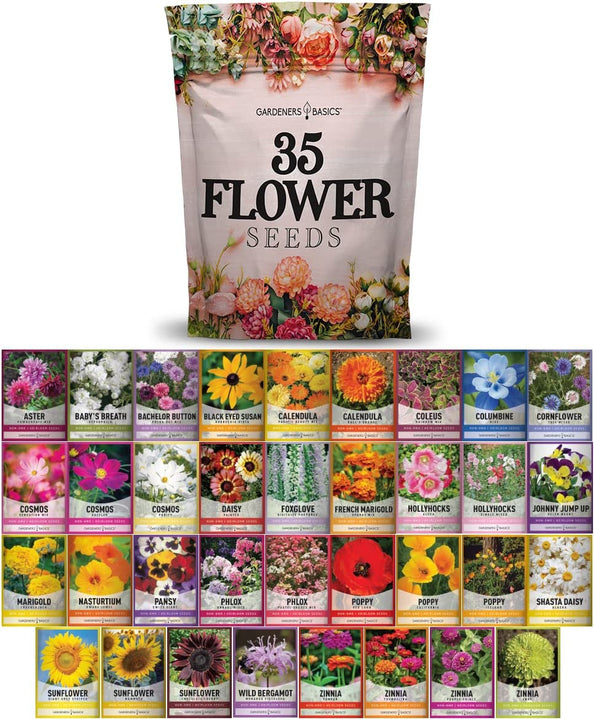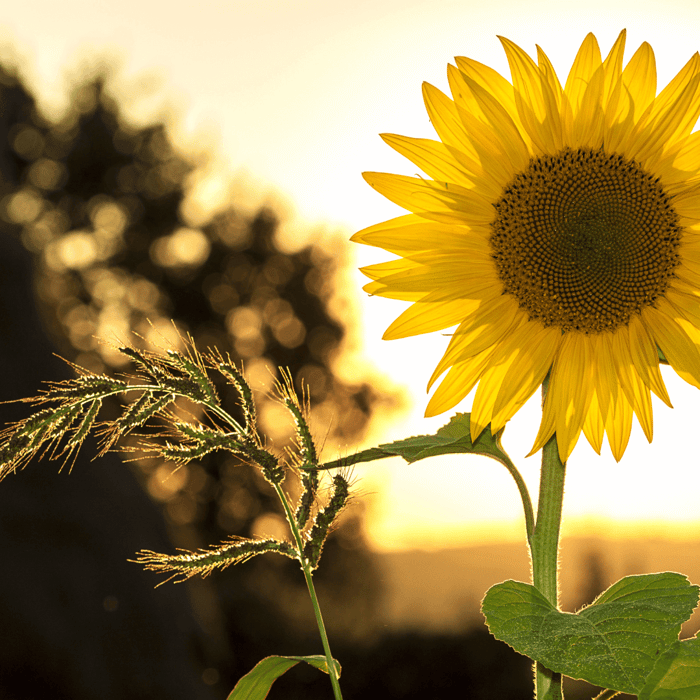Sunflowers are a popular garden plant that is admired for their beautiful yellow flowers and tasty seeds. Sunflower seeds can be eaten raw, roasted, or used to make oil. The plant is easy to grow, making it a perfect choice for beginner gardeners. In this article, we will dive deep into how do sunflower seeds grow, including germination, planting, harvesting, and storing, and we'll also look at different sunflower varieties and ways to care for them.
Sunflower Varieties
There are many different sunflower varieties to choose from. Some popular varieties include:
- Dwarf sunflowers: These sunflowers grow to a height of about 2-3 feet and are perfect for growing in small gardens or containers.
- Giant sunflowers: These sunflowers can grow up to 12 feet tall and have large seed heads.
- Multi-branching sunflowers: These sunflowers have multiple stems and produce more flowers than single-stem varieties.
When selecting a sunflower variety, consider the size of your garden, the climate, and the purpose of growing the plant.
Germination
Germination is the process by which a seed begins to grow into a plant. Sunflower seeds require specific conditions to germinate successfully.
- Soil temperatures: Sunflower seeds require soil temperatures of at least 50°F to germinate. Ideally, the soil temperature should be between 70-78°F for optimal growth.
- Planting depth: Plant the seeds about 1-2 inches deep into well-draining soil. If the soil is too compact, loosen it up to allow the roots to grow easily.
- Watering: Keep the soil moist but not waterlogged. Overwatering can cause the seeds to rot.
- Sunlight: Sunflowers require full sunlight to grow. Plant them in a location where they can receive at least six hours of direct sunlight.
To speed up the germination process, you can soak the seeds in water for 24 hours before planting them.
How to Plant Sunflower Seeds
Sunflowers are easy to grow and can reach up to 12 feet tall in just 120 days. Here are some steps to planting sunflower seeds:
- Choose your sunflower varieties: Select the type of sunflowers you want to grow based on the size, climate, and purpose of growing the plant.
- Prepare the soil: Sunflowers grow well in well-draining soil that is rich in organic matter. Remove any weeds and loosen the soil to make it easier for the roots to grow. If the soil is heavy, you can mix in some sand to improve drainage.
- Sow the seeds: Plant the seeds about 1-2 inches deep and about 6 inches apart. If you are planting more than one row, leave about 2-3 feet between the rows.
- Water the seeds: Water the seeds immediately after planting and keep the soil moist but not waterlogged. Sunflower seeds need consistent moisture to germinate.
- Provide sunlight: Sunflowers require full sunlight to grow, so choose a spot in your garden that gets plenty of sun. If you live in a hot climate, you can plant sunflowers where they will receive some shade during the hottest part of the day.
- Protect the seeds: Sunflower seeds are often eaten by birds and squirrels. To protect your seeds, you can cover them with netting or use a scarecrow to deter animals.
- Starting indoors: If you live in a colder climate, you can start your sunflower seeds indoors. Plant the seeds in peat pots or seed-starting trays about 4-6 weeks before the last expected frost. Transplant the seedlings outdoors when the weather warms up and the soil has reached a temperature of at least 50°F.
Sunflower Care
Sunflowers are easy to care for once they have germinated. Here are some tips to help your sunflowers grow and thrive:
- Watering: Water your sunflowers regularly, especially during hot, dry weather. Sunflowers need about an inch of water per week to grow properly. Water deeply at the base of the plant to encourage deep root growth.
- Fertilizing: Sunflowers don't need a lot of fertilizer. If you want to give them a boost, you can add some compost or a balanced fertilizer to the soil before planting. Avoid using high-nitrogen fertilizers, which can cause the plant to produce more foliage and fewer flowers.
- Supporting the plant: As sunflowers grow taller, they can become top-heavy and start to lean. You can support the plant by tying it to a stake or using a trellis to keep it upright.
- Deadheading: Deadheading is the process of removing dead or wilted flowers from a plant. This encourages the plant to produce more flowers and prolongs the blooming season.
Wildflower, Perennial, & Annual Flower Seed Kit | 35 Variety Pack

$29.95
$49.95
35 Flower Seeds Variety Pack – Heirloom, Non-Hybrid, Non-GMO, Open-Pollinated – Perfect for Pollinator-Friendly Gardens Transform your garden with our 35 Flower Seeds Variety Pack, offering a stunning and diverse selection of heirloom, non-hybrid, and non-GMO seeds. Each variety in… read more
How to Harvest Sunflowers
Sunflowers are ready to be harvested when the seed head has turned brown and the back of the flower head is dry. Here are some steps to harvesting sunflowers:
- Cut the stem: Use a sharp knife or pruning shears to cut the stem of the sunflower about 4-5 inches below the seed head.
- Remove the seeds: Gently rub the seed head to remove the seeds. You can also use a fork or a comb to remove the seeds.
- Dry the seeds: Spread the seeds out on a flat surface and let them dry for a few days.
- Storing the seeds: Store the seeds in an airtight container in a cool, dry place. They can last for up to a year.
Seed Production
Sunflowers are a popular crop for seed production. The seeds can be used to make sunflower oil, or they can be sold as bird seed. Here are some steps to growing sunflowers for seed production:
- Choose a variety: Select a sunflower variety that is known for its seed production.
- Planting: Plant the sunflowers in rows, leaving about 2-3 feet between the rows. Space the plants about 12-18 inches apart. Make sure the soil is well-draining and rich in organic matter.
- Care: Water and fertilize the sunflowers regularly to encourage healthy growth. Remove any weeds that compete for nutrients.
- Harvesting: Allow the sunflowers to dry on the stalks. Once the seed head has turned brown and the back of the flower head is dry, cut the stem and remove the seeds.
- Cleaning: Clean the seeds by removing any debris or plant material. Store the seeds in an airtight container in a cool, dry place.
Conclusion
Growing sunflowers is easy and rewarding. Whether you're growing them for their beautiful flowers or tasty seeds, sunflowers are a great addition to any garden. With proper care and attention, you can enjoy a bountiful harvest of sunflower seeds that can be used for planting, snacking, or seed production. Follow these tips to ensure a successful growing season and enjoy the beauty and bounty of sunflowers in your garden. Now you know how do sunflower seeds grow, what variety of sunflower seeds for planting will you try first?








